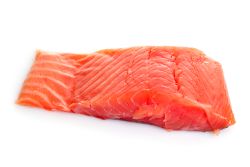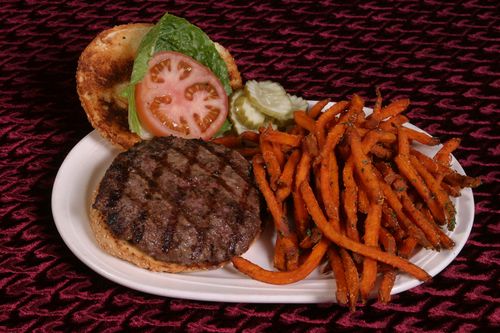Cooking oils are a necessary ingredient in the preparation of many different kinds of foods. When sautéing or frying help keep the food from burning. When baking, oils help keep the food moist. Oils are also added to sauces and dressings. However, all cooking oils are not created equal. Some oils are best suited to particular types of cooking, and certain ones are healthier than others.
While there are literally hundreds of different oils from which to choose only about 15-20 of them are most commonly used in the modern kitchen. The more common cooking oils on the market today include: vegetable oil; canola oil, olive oil; butter; peanut oil; sesame oil; sunflower oil; and margarine. Like I say there are lots more but right now we'll just focus on the ones you're most likely to see sitting on the shelf at the grocery store.
The production of cooking oils stretches back more than 5,000 years. In ancient times, people began heating oily plant products until the plants exuded oil that they could collect and use. Olive oil was being produced in southern Europe as early as 3,000 B.C. and soy oil first appeared in Asia around 2,000 B.C. Other cultures—such as those in Latin America, North America, Africa and others used peanuts, sunflowers, palm kernels and even coconut to produce cooking oil.
Although the basic steps have remained the same for thousands of years, modern science has significantly improved the cooking oil production process. Some types of oils including olive, peanut and certain sunflower and coconut oils can be cold-pressed, meaning that they undergo minimal processing. These oils tend to be light and flavorful but not suitable for use in all cooking scenarios. For example, olive oil has a relatively low smoke point, meaning that it's not ideal for certain types of cooking such as frying foods.
Vegetable oils that can't be cold pressed are first cleaned and ground before being pressed in order to extract the oil from them. After extraction, the oil is refined and washed in a centrifuge and then washed again. After some further refining, it is filtered or distilled and then packaged for sale.
Butter is also frequently used as cooking oil. It is usually made from sweet cream and is salted. Butter produced on the farm uses the cream directly from whole milk. Today's commercially-produced butter is made by extracting small amounts of cream from whey, a by-product of cheese-making, using large centrifuges.
 Now let's talk about margarine and get that part of the discussion out of the way. Margarine is a butter substitute that has been around since the late 1800s. It is made from vegetable oils, animal fats or a mixture of both. Its manufacturing process involves the addition of hydrogen atoms to the fat molecules, making them more saturated and raising the point at which they melt. As a result, margarine remains a solid at room temperature. This process is known as "hydrogenation," and requires the presence of a metal catalyst and temperatures of about 500°F (260°C).
Now let's talk about margarine and get that part of the discussion out of the way. Margarine is a butter substitute that has been around since the late 1800s. It is made from vegetable oils, animal fats or a mixture of both. Its manufacturing process involves the addition of hydrogen atoms to the fat molecules, making them more saturated and raising the point at which they melt. As a result, margarine remains a solid at room temperature. This process is known as "hydrogenation," and requires the presence of a metal catalyst and temperatures of about 500°F (260°C).
All cooking oils contain fats. But as you should already know by now, all fats are not the same. Some fats are healthier for our bodies than others. Margarine is far and away the worst oil on the list. Most of margarines are loaded with trans-fats (the really bad fats), along with lots of artificial ingredients so do yourself a favor and just avoid them. When you want to spread something on your bread or pancakes, you're far better off choosing butter.
While you certainly shouldn't be gnawing on a stick of butter every day, the occasional use of butter is actually a good thing. First, butter is a rich source of vitamins and minerals. It also contains fatty acids, which are used as an energy source and can help protect against certain diseases and conditions. And, in moderation, the cholesterol contained in butter is good for the body. The type of cholesterol found in butter helps maintain intestinal health.
Lastly, let's look at how the other cooking oils—vegetable oil; canola oil, olive oil; peanut oil; sesame oil; and sunflower oil—compare with one another.
•Vegetable oil: Most vegetable oils are 'good' fats that have been altered or hydrogenated. Remember hydrogenation from the margarine manufacturing process? This process increases the level of 'bad' fats found in vegetable oils. Some manufacturers try to offset the bad side of vegetable oil by claiming that they're high in Omega-6s, a polyunsaturated fat that is good for the body when balanced with Omega-3 fatty acids. But that's not the case with vegetable oils and it is certainly not the case with the American diet, where we typically eat 20-to-1 Omega-6 to Omega-3.
•Canola oil: This oil is generally has less than 7% saturated fat, high in monounsaturated fat and has a beneficial Omega-3 fatty acid profile. As such, it is endorsed by the American Dietetic Association and the American Heart Association has one of the healthier oil choices for cooking.
•Olive oil: Considered by many to be the 'king' of cooking oils, olive oil is available in a lot of different varieties. Many people consider this to be one of—if not the the—most healthy cooking oils around. It's got lots of monounsaturated fats, which have been linked to a lowered risk of coronary disease.
•Peanut oil: This oil is frequently used in Asian countries. Though it is higher in saturated fats than olive oil, it's also a good source of monounsaturated fats. Peanut oil can be flavorful so it's not suited for all dishes. Persons with peanut allergies need to stay away from peanut oil.
•Sesame oil: Sesame oil has a high proportion of Omega-6 fatty acids (41%) but it has no Omega-3s. And while it's low on saturated fat, (13 grams), it's also fairly low on monounsaturated fats (46 grams compared to 77 grams in olive oil).
•Sunflower oil: This cooking oil comes in pretty low on the saturated fat scale (only 11 grams compared to 14 in olive oil), it is not such a great source of monounsaturated fat (20 grams versus 73 grams in olive oil).
The last thing I want to touch on here is the Omega-6 to Omega-3 ratio I mentioned earlier. Research suggests that our bodies are hard-wired to function best with a one-to-one ratio of Omega-6 to Omega-3 fatty acids. But in today's Western diets very high ratios of Omega-6 to Omega-3 (up to 20 to 1) is the norm. This creates a host of health problems including cardiovascular disease and more. Lower ratios have been linked to prolonged healthy outcomes and reduced incidents of disease and illness.
So there you have some information about cooking oils that should help you to make an informed decision regarding which oil you'll be using next in the kitchen.
More Information About Muscle Building Click Here
Source White Market




No comments:
Post a Comment
What do you think about this quote? What's your favorite The Hangover. quote?